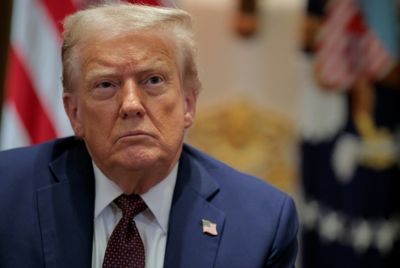3I/ATLAS Update: Avi Loeb Contradicts Elon Musk's Nickel Take on Oumuamua Anomaly
The Harvard astrophysicist disputes Musk's claim that the interstellar object 'Oumuamua was metallic, suggesting instead that it may be an artificial structure.

Harvard astrophysicist Avi Loeb has dismissed tech billionaire Elon Musk's claim that the mysterious interstellar object 'Oumuamua may be made of nickel, arguing that 'there is no observational evidence to support it.'
The exchange has reignited global interest in the origins of such cosmic visitors, coinciding with the discovery of 3I/ATLAS (C/2025 L1), a new interstellar object exhibiting puzzling, non-gravitational acceleration similar to 'Oumuamua.
Musk's Metallic Hypothesis Divides Scientists
The controversy began when Musk speculated on X (formerly Twitter) that the anomalous acceleration of 'Oumuamua--the first known interstellar object to pass through our solar system--might stem from its 'nickel-rich composition.'
Musk suggested that metallic materials might reflect sunlight or behave like a propulsion mechanism, similar to spacecraft solar sails.
However, experts swiftly pushed back. Data from NASA's Jet Propulsion Laboratory (JPL) indicates that 'Oumuamua's acceleration could not be explained by gravitational forces alone, yet no evidence points to a metallic structure.
Instead, NASA scientists have said the object likely behaves like a comet without a visible tail, propelled by outgassing or the release of hydrogen trapped in its icy surface.
Loeb Counters: 'No Evidence for Nickel Composition'
Responding to Musk's theory, Avi Loeb, the Harvard astronomer best known for leading the Galileo Project, said in a Medium essay that Musk's nickel hypothesis 'doesn't align with the available data.'
Loeb argued that 'Oumuamua's unusual motion and brightness fluctuations are 'better explained by a thin, artificial structure' rather than a dense, metallic rock.
'The simplest explanation consistent with the data is that it may have been designed for propulsion by sunlight,' Loeb wrote, suggesting the possibility that it could be a fragment of alien technology--a position he first outlined in The Astrophysical Journal Letters in 2018.
Loeb added that Musk's interpretation 'ignores how weakly 'Oumuamua reflected light,' which contradicts the bright metallic surface implied by a nickel composition.
3I/ATLAS Rekindles the Mystery
The debate coincides with renewed interest in another cosmic visitor, 3I/ATLAS (C/2025 L1), which was discovered on 1 July by the Asteroid Terrestrial-impact Last Alert System (ATLAS) in Chile.
According to the Minor Planet Centre, the object's hyperbolic trajectory confirms it originated outside the solar system--making it the third known interstellar object after 'Oumuamua in 2017 and 2I/Borisov in 2019.
Astronomers at the European Southern Observatory (ESO) noted that 3I/ATLAS also appears to display non-gravitational acceleration, the same phenomenon that made 'Oumuamua so enigmatic.
In a Newsweek report, Loeb said this new detection 'reopens the question' of whether humanity is encountering 'natural debris or something engineered.'
Scientists Caution Against Alien Claims
Mainstream astronomers, however, continue to advise caution. Karen Meech, a planetary astronomer at the University of Hawaii who led the early observations of 'Oumuamua, told Scientific American that there remains 'no compelling evidence' for artificial origins.
'Extraordinary claims require extraordinary evidence,' she said, urging scientists to exhaust all natural explanations before considering the extraterrestrial.
Other researchers, including those from the European Space Agency (ESA), believe both 3I/ATLAS and 'Oumuamua might be fragments of distant exoplanets ejected during cosmic collisions--their peculiar shapes and motions shaped by radiation over millions of years.
Public Fascination and Future Exploration
Despite the scientific disagreements, the discussion between Loeb and Musk has captured widespread public attention. Musk's followers on X engaged in heated debates, with some supporting his metallic hypothesis and others embracing Loeb's call for open-minded inquiry.
Loeb's Galileo Project, founded in 2021, continues to gather observational data using ground-based telescopes to detect unidentified aerial and space phenomena.
Meanwhile, Musk's SpaceX is preparing new missions that could help shed light on interstellar exploration.
As Loeb wrote in his latest post: 'Whether natural or artificial, these interstellar messengers remind us that the universe is more imaginative than we are. Our job is to listen, not dismiss.'
© Copyright IBTimes 2025. All rights reserved.





















